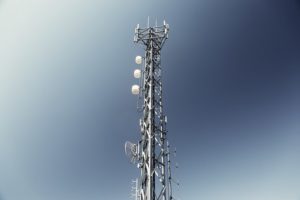Always the bridesmaid, never the bride.
Antennas, the unsung heroes of the communication and wireless networking industry.
Where you are in your house, your car or just walking the dog with your phone, then some form of antenna is keeping you connected in today’s world.
Network virtualisation, what is it?
The Shannon–Hartley theorem.
In 1948 Claude Shannon proved the now famed The Shannon-Hartley theorem, stating “the maximum rate at which information can be transmitted over a communications channel of a specified bandwidth in the presence of noise.”
This translates to the fact that wireless data can only travel so fast. So it begs the question of how will our networks be able to support one billion new 5G users in the next seven years? (Estimated 2025)
New wireless technologies are being created to satisfy the insatiable demand for content on the move.
As you have seen in the last few years, wireless connections are becoming omnipresent in not just our devices such as mobiles, tablets and computers but moving on through into cities, cars and directly into our home, and due to the all but forgotten RF Enabler – the humble antenna. Today’s antenna is a far cry from the early pull-up mobile phone days. High-speed networking is made possible by nearly invisible antenna systems, and this is just the beginning.
Antenna Anatomy
A phone’s antenna is different from a regular antenna. Primary antennas have solved communication problems by allowing one device to transmit and receive wireless signals, but with a phone antenna, you have to consider what an increase in data traffic does. This strains reception quality and drains the battery.

Antennas now are a metal strip containing printed circuit boards placed in a device, but it is the tuning that is the unique part…
To boost connectivity and performance an RF engineer’s job is to ensure the antenna focuses on the correct frequency at the right time. The tuning tells it when to transmit or receive therefore maximising the antennas performance.
Impedance Matching
This occurs when there is more than one antenna in the equation. The RF engineer’s job is to ensure both work together, collectively so they transmit and receive on the same levels, again this optimises networking efficiency and ultimately performance.
Antenna Solutions
This may sound a little plain, but in essence we need more antennas to meet more demand. You may have noticed in the recent past a significant change in the aesthetics of the latest Wi-Fi routers. Now they come with multiple antennas.
Cellular Networking
With every smartphone upgrade, a new platform or new technology devised creates a whole new set of challenges for the antenna industry. And this challenge has been a daunting one and one that had to be developed quickly, as we all saw the jump to ultra-slim mobiles happened pretty quickly. With the leap to ultra-slim phones, antennas really didn’t have much room in which to work, so manufacturers were set the task of embedding antennas and through impedance tuning to ensure they operate efficiently.
A proliferation in Frequency Bands also adds to the mountain of complexity.’Carrier aggregation’ is a technique being used by manufacturers and mobile carriers. The technique involves combining multiple frequency bands to enhance the performance of the network. So the antenna must then be able to operate across multiple bands cognitively.
“Antenna-plexer” technology has come along into the marketplace. This is in reaction to the demand for thinner and thinner devices and edge-to-edge screens. Antenna now is almost invisible. In the average smartphone today, you may have between two to four inside, but new smartphones that are bezel-less integrate double that.
This area is a real hot-spot in the industry moving into 2019, and we are expecting some breakthrough innovations delivering higher performance in ever decreasing sizes.
Networking for Automotives
Breakthroughs in antenna innovations are coming into our cars it seems with every latest model released by car manufacturers. In today’s car, you can expect Wi-Fi, 4G, GPS navigation and satellite radio, all of these innovations are routed through – the humble antenna.
You will be familiar with many automobiles that have a point on the top of the roof, a little like a fin from a fish, that’s where most antenna sit, the marriage between the two is the balance between style and design, but of course performance. With autonomous vehicles now hitting the marketplace, the industry reacted with speed to ensure a high volume of data messages are being processed with minimal delay, it’s called ‘low latency’ otherwise the accident rate on the roads would be sky-high.
Wi-Fi Networking
You simply can’t get away from WI-FI when talking about antennas.
The latest industry buzzword is MU-MIMO technology. It stands for:
- Multi-user
- Multiple-input
- Multiple output
A rather long-winded explanation of ‘more antennas’ if you ask me.
The technology revolves around extending network capacity in the home by producing routers with more antenna as we covered earlier. It is similar in a way to when network operators approached MIMO by adding multiple antennas onto their cell towers. Beamforming technology is what combines the two, by focusing the signal to the point of use, which improves the strength and range of the device.
The world of Antennas is in a constant flux of change and development. We are in an age of new challenges such as ever-increasing frequency bands, as the consumer craves for ever thinner casing and more integrated personalisation. Battery life is high on the priority list for today’s consumer, and antenna efficiency goes a long way to maximising battery life while delivering content instantly to the user.
Conclusion
Antenna are the forgotten heroes of our connectivity lifestyle that we lead today. The little big guys who keep your personal and business life moving forward. At home, work, in the car or walking the dog, you wouldn’t be connected without one.
Author Bio
 Jimmy has been a blogger for the last 11 years after retirement. He worked in the electronic manufacturing field for nearly 30 years and keeps a close eye on the marketplace and the latest news. He is associated with Winsig who specialise in internet antenna in Australia.
Jimmy has been a blogger for the last 11 years after retirement. He worked in the electronic manufacturing field for nearly 30 years and keeps a close eye on the marketplace and the latest news. He is associated with Winsig who specialise in internet antenna in Australia.

Be the first to comment on "A Tiny Antenna Plays a Big role in our Everyday Lives"